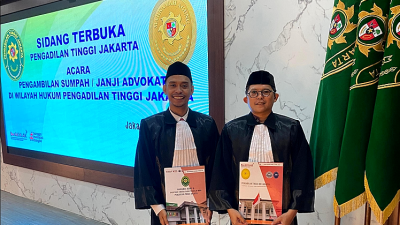
SINGAPORE: Amid warnings of the largest recorded global bleaching event, Singapore’s corals are showing signs of recovery as sea surface temperatures began to fall, with about 20 per cent to 30 per cent of them still showing signs of bleaching.
But the marine heatwave has taken its toll on some corals here, with the 30 to 55 per cent of the corals bleached, the National Parks Board (NParks) and National University of Singapore (NUS) told The Straits Times.
This comes amid the most extensive global coral bleaching event, which saw 77 per cent of the world’s coral reef areas subjected to bleaching-level heat stress, Reuters reported last month.
In mid-April, the United States National Oceanic and Atmospheric Administration (NOAA) declared the global bleaching event, making it the fourth of its kind.
Global coral bleaching also took place in 1998, 2010 and 2016, and Singapore experienced mass coral bleaching then.
Those years and 2024 are El Niño years, a climate phenomenon that causes sea surface temperatures in the eastern Pacific to heat up and elevate global temperatures.
Corals get their vibrant colours from microscopic algae that live in their tissues.
When they get stressed from rising sea temperatures, the corals expel the algae and turn ashen white.
The first sign of mild bleaching was reported by NUS and NParks researchers in early May in Pulau Satumu and Pulau Hantu.
This was also around the time when sea surface temperatures were above monthly mean temperatures and annualised monthly means for extended periods, which is not normal.
In May, the sea surface temperatures around Singapore ranged between 30.84 °C and 31.84 °C, according to St John’s Island National Marine Laboratory’s (SJINML) Marine Environment Sensing Network. The highest average monthly temperature here is usually 30.5 °C.
The corals at other sites – Kusu Island, Lazarus Island and Sisters’ Islands – were also mildly bleached.
Most of Singapore’s intact coral reefs are found in the southern waters.
The situation worsened in mid-July as more extensive bleaching was observed at all five sites, with 30 per cent to 55 per cent of bleached corals reported at Pulau Hantu, Pulau Satumu, Kusu Island and Sisters’ Island.
As sea surface temperatures began to drop by the third week of July, some early signs of recovery – where bleached corals begin to regain their colour – were observed. There was also no further bleaching observed.
In September, the corals were showing signs of recovery, although about 20 per cent to 30 per cent were still bleached or partially bleached.
Sue Ye, founder of Marine Stewards, a marine conservation non-governmental organisation, said her team observed about 30 per cent of hard corals showing signs of being stressed or bleaching during a dive survey on Sept 24.
Although temperatures have dropped, the remnant effects of bleached corals remain, she added.
Corals unaffected by June oil spill
In June, ST reported that researchers from SJINML observed the extent of bleaching to be about 40 per cent, at the same time an oil spill on June 14 spread to the beaches and waters of St John’s, Lazarus and Kusu islands.
The June 14 oil spill – the largest experienced by the country in over a decade – was the result of a Netherlands-flagged dredger hitting a Singapore-flagged bunker vessel at Pasir Panjang Terminal, causing 400 tonnes of fuel to leak into the sea.
But Dr Jani Tanzil, SJINML’s facility director, told ST that the oil spill had unlikely worsened bleaching, and there was no difference in coral bleaching levels found in areas where oil was seen floating as compared with sites farther out.
She added that this was during neap tide – where the difference between high and low tides is smallest.
This means the waters do not recede as far back as they do during spring tide, which occurs at full moon and new moon.
Studies have shown that exposure to oil can stunt corals’ growth and reproduction, and affect other biological processes and feeding behaviour.
With signs of recovery observed in September, Dr Tanzil said more recovery can be expected in the months to come, granted the corals are not exposed to stressors or disturbance events like oil spills.
“If the recovery trajectory is similar to past mass bleaching events, we can expect corals that have survived till now to be fully recovered by early 2025,” she added.
To document the extent of mortality and health of corals, NUS scientists have tagged 100 coral colonies and are tracking their status in the coming months for research on ecological resilience under the Marine Climate Change Science Programme, which is managed by NParks.
Corals can recover if environmental and water temperature conditions return to normal, with the ideal water temperature for corals to thrive lying between 23 °C to 29 °C.
Coral bleaching events usually last from a few weeks to several months, and the duration depends on external stressors such as anomalies of sea surface temperatures, the susceptibility of species to bleaching, severity of environmental conditions, and the geographical location.
Different corals have different tolerances to temperature changes and some species may be more adaptable to differing conditions and stressors, said Ye, adding that those that can withstand high temperatures have a higher chance of recovering.
“Corals in Singapore have evolved to tolerate higher water temperatures but 31 °C is already very close to their upper tolerance limit,” she said.
One critical factor determining corals’ recovery is their ability to re-establish their symbiotic relationships with algae, she added.
It was noted that coral reefs did not bleach in 2023 – despite showing signs of stress – as sea surface temperatures did not exceed bleaching threshold. But in 2024, the threshold was exceeded and extensive coral bleaching in the region was observed.
Dr Karenne Tun, director at NParks’ National Biodiversity Centre, said NParks is in discussions with scientists from the Centre for Climate Research Singapore under the National Environment Agency to develop a bleaching assessment tool based on on-site sea surface temperatures to determine bleaching stress levels of corals in our waters.
“The team will take reference from NOAA’s bleaching watch products to develop this monitoring tool, which will help us optimise resources for response planning and monitoring,” said Dr Tun.
The statutory board has also reached out to marine enthusiasts who survey intertidal reefs and dive operators to submit reports on the Bleach Watch Singapore Facebook page to consolidate local observations.
Over the next 10 years, starting in 2024, 100,000 corals will be progressively planted and grown in Singapore’s waters to beef up its reef cover.
The Republic’s waters are home to around 250 species of hard corals of various colours and shapes – about one-third of the more than 800 species of the world’s hard corals.
They serve as habitats for more than 100 species of reef fish, about 200 species of sea sponges, as well as rare and endangered seahorses and clams, among other creatures.
ADVERTISEMENT
ADVERTISEMENT








































